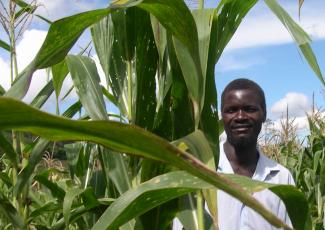Health infrastructure is limited; more than half of Mozambicans must walk an hour or more to their nearest health facility, and medicine stockouts are common. There are only three doctors per 100,000 people—a proportion that is among the lowest in the world. Systems for tracking, motivating and retaining staff are weak, and frontline health providers are often poorly trained and have limited management skills.
Despite some of the worst health indicators in Africa, the country has made significant progress in reducing mortality rates and improving access to primary health services. USAID and the Ministry of Health are building the capacity of the public health system to ensure that quality basic health services are more accessible to the rural poor, with impressive effects. Today, 97 percent of pregnant women receive at least one antenatal care visit—over a million of which occurred in USAID-supported facilities in 2010-11. Since 2005, our assistance has rehabilitated and equipped over 200 health facilities, and has distributed over a million insecticide-treated bed nets since 2010 to help prevent malaria—the most serious health threat.
More than one in 10 Mozambican adults—1.2 million people—have HIV/AIDS, 58 percent of which are women; another 200,000 children are infected. We provide one-third of all the antiretroviral drugs taken by Mozambicans and support government efforts to ensure availability of laboratory reagents and HIV/AIDS rapid test kits. We also improve the logistical management of medicines and medical supplies, and supported the first nationwide campaign focusing on preventing HIV.
Learn More
Acting on the Call Report 2021: Ending Preventable Child and Maternal Deaths

USAID
